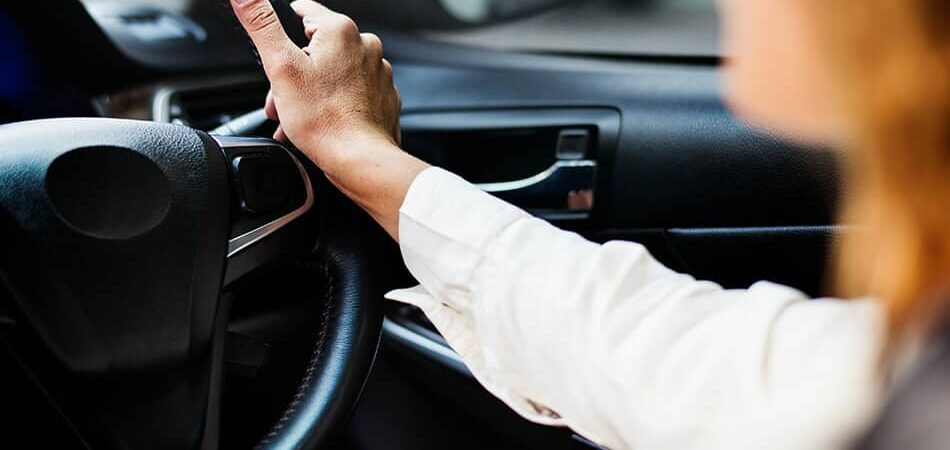
By definition, distracted driving is equivalent to driving blind, even if it’s only for a few seconds. Many factors can cause distracted driving, but texting is high on the list.
According to the National Highway Transportation Safety Administration, there were over 30,000 crashes in 2019 due to distraction.
Many of those wrecked cars and trucks are salvageable and can be purchased at an online auto auction. You can bid on salvage title cars that feature many cars involved in distracted driving incidents.
However, the idea is to keep you from becoming distracted in the first place, so here are some tips for staying focused while driving:
Put Down Your Cell Phone
By now, most states have laws on the books about using your cell phone while driving. Most states outlaw the use of texting while driving, but many states also have laws that prohibit the use of a handheld device while driving too.
Because of laws like this, many car manufacturers added hands-free Bluetooth technology to their infotainment centers in newer cars.
It was once a luxury found on upscale models, but it’s now part of the manufacturers’ technology safety suite in even their entry-level cars.
If you’re driving an older car without this technology, then put your phone away before you hit the road.
If you don’t think that you can resist the urge to check your text messages, then put a text-blocking app on your phone.
There are many to choose from, with options that include an automatic message that tells the caller that you’re busy and will text back later.
Pull Over if you’re Drowsy
Drowsy driving can be as much of a problem as distracted driving, and there are many reasons for being drowsy.
Most drowsy driving is due to people trying to make good time on long trips and driving longer than they should.
If you find yourself overdriving your ability, then find the nearest place to stop and get some rest before you try to drive any further.
Drinking a cup of coffee is not a solution, so don’t try to avoid sleeping by drinking a lot of coffee.
Drowsy driving can also be a reaction to a medication, so if your medication causes you to get sleepy, don’t get behind the wheel of a car.
Limit Your Passengers
Most states have laws that limit the number of passengers you can have in a car if you’re a novice driver, but this can also affect a seasoned driver.
If you have a car full of friends and family, you might be tempted to pay more attention to them than the road, so limit the number of people in your car.
It’s easy enough to take separate cars and spend the evening chatting once you’re safely at your destination.
Don’t Eat in Your Car
You might not think that eating in the car is that big of a deal, but it only takes a few seconds for a hamburger to slide off the bun and into your lap.
Your first reaction is to look down, and that’s all it takes to hit someone in front of you. Many newer cars have collision avoidance systems that will apply the brakes for you if don’t react in enough time.
However, this is not a foolproof system, and it shouldn’t be relied on. If you must eat and drive, then make it a snack that you can easily eat while waiting at a stoplight.
Load Your Playlist Before You Leave
Listening to your favorite tunes while you drive is one of the pleasures of traveling.
Whether you’re heading out on a short trip or taking a long drive across the country, pre-loading your playlist before getting behind the wheel is the best way to stay focused on the road ahead.
Give Yourself Plenty of Time
If you’re in a hurry then you’re not paying attention to the road; you’re worrying about whether you’re going to get to your destination on time.
Instead of rushing, leave a little early and plan your trip to include the possibility of delays like traffic.
Secure Your Cargo
When you have everything secured, you will be less tempted to grab for something falling off of the passenger seat. This goes for kids and pets in the car too.
A gate between you and your pet in the back will keep them from coming up into the front seat, and if your dog can’t sit still, you may want to put them in a travel kennel to secure them in place.
Your children should always be in an age-appropriate car seat. Many states have laws in place regarding the size of the seat based on the child’s age or weight.
Know Your Route
Before you leave home, you should map out your route by using your GPS or by finding your route on your map.
GPS can be distracting in itself, so if you can, avoid using the audio portion of it. If you find it too distracting on the infotainment screen, then don’t turn it on.
By following these tips, you can drive with fewer distractions, and make it safer for everyone on the road.


